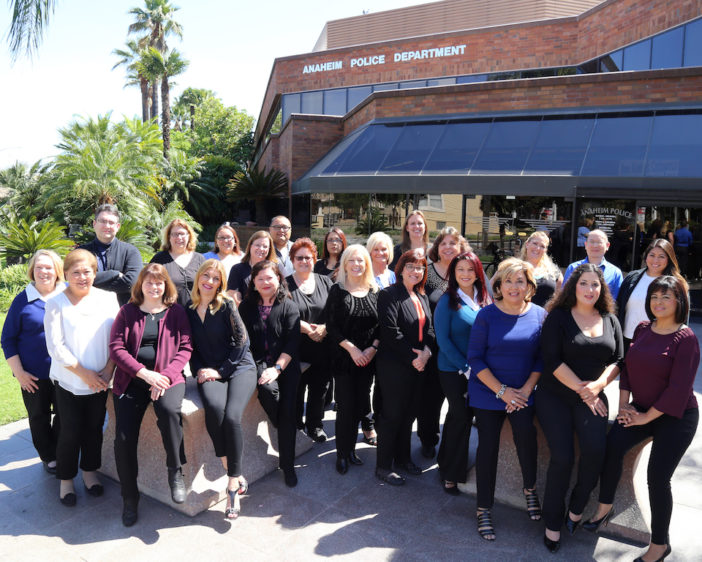A residential burglary occurred on June 8, 2016 as the victim of the crime was in the process of moving into the home in Anaheim. Patrol officers and forensics were dispatched to the scene.
On June 13, a forensics fingerprint match resulted in the identification of the suspect through prints found in the home. Follow up by the assigned case detective led to a full confession and subsequent arrest.
“From start to finish, this case took five months and 10 days to process, record, submit, attend court to testify – which led to the successful adjudication of the crime committed,” said Nicole Van Train, Anaheim Police records manager. “[This] is a testament to the staff you don’t see behind the scenes that catalogue, organize and ultimately recall the information when needed to present in court.”
APD’s records team – made up of 26 staff members over two shifts – processed 40,923 police reports, 9,005 mailed/front counter/emailed requests for copies of reports, 18,533 moving citations, 16,177 parking citations, and 5,013 traffic collision reports in 2015. With 394 sworn officers, each records staff member processes the work of about 14 officers.
“Staff need to pay extreme attention to detail and ensure the integrity of the records we maintain,” said Van Train. “We are just as important as the officers out in the field – in a different respect – but it is the tireless efforts of members of the records section who are a vital part to keeping this well-oiled machine operational.”
The records section’s first involvement with a case is an officer’s police report. Once completed, it is routed to records, where it is transcribed and fact-checked. Vehicles and property items are verified and other relevant details are checked for accuracy. Once reviewed, finalized and input into the Records Management System, the report is routed to the investigative unit responsible for the case. Records handles any other reports generated during the investigation process, including forensics, confessions, etc.
Once the case hits the courts system, the court liaison handles records requests and coordinates with various other agencies involved with court proceedings. In 2015, the court liaison was responsible for submitting 7,854 reports for criminal filing and for processing 19,705 subpoenas for officers appearances, for example.
“We have to make sure that the appropriate paperwork is submitted,” said Van Train.
And the work never really ends – even once the case is closed and a perpetrator is put behind bars, paperwork still may be generated if restitution is sought by the victim.
“Everyone thinks there’s swift justice with these crime TV shows,” Van Train said. “Adjudication is a lengthy process.”
The unsung heroes in the records section are there every step of the way.
 Behind the Badge
Behind the Badge



